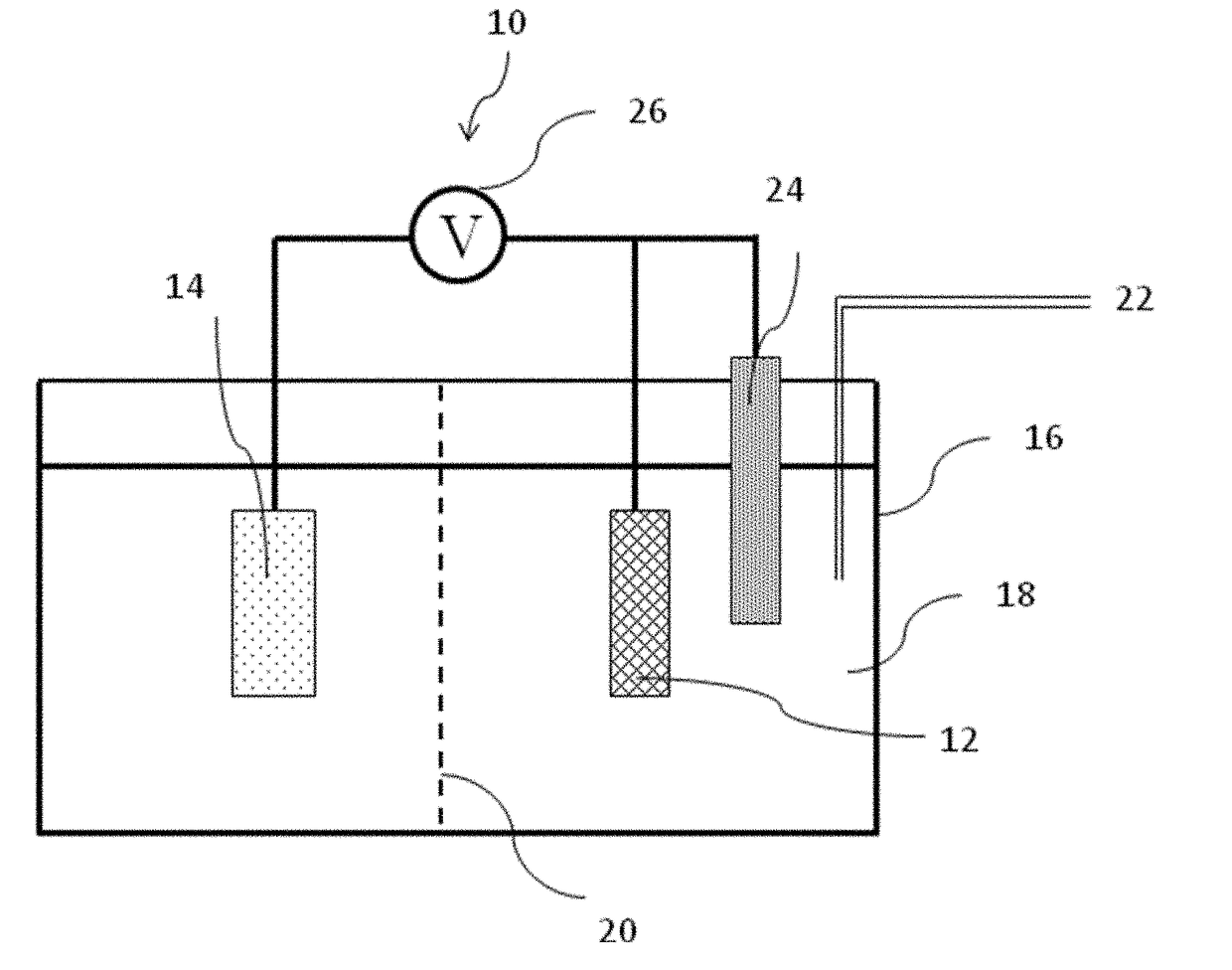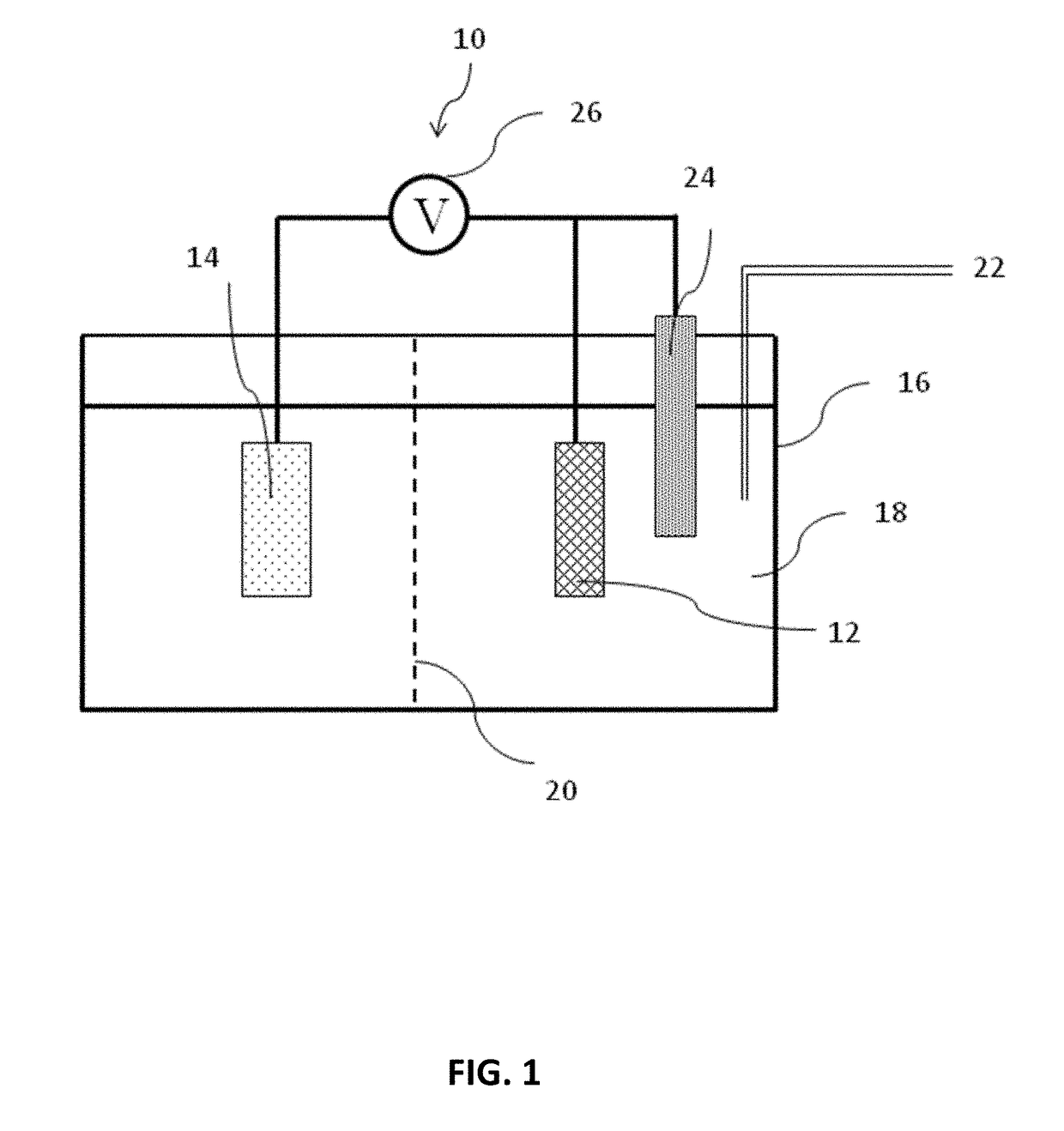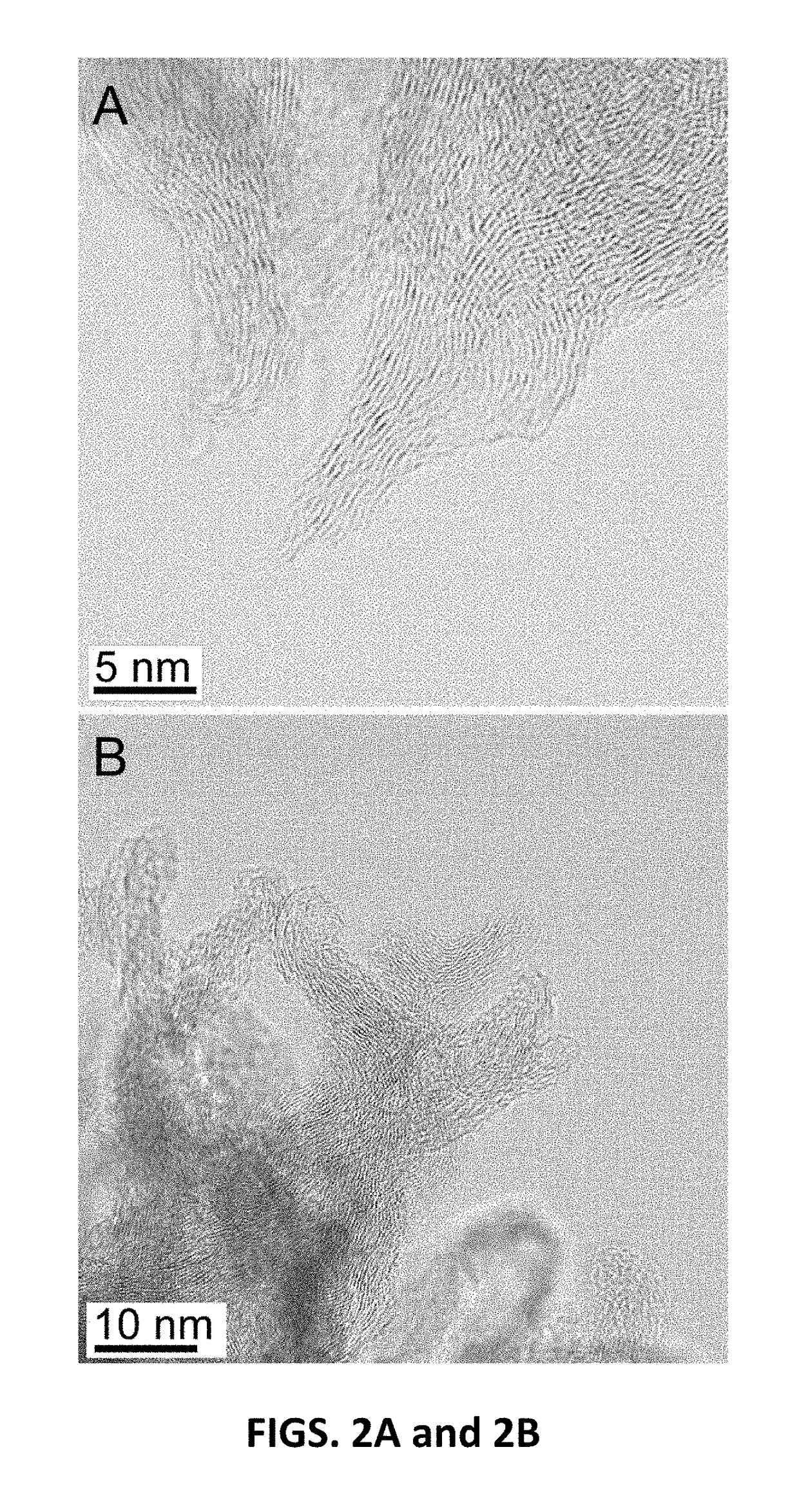Electrochemical catalyst for conversion of nitrogen gas to ammonia
a technology of ammonia and electrochemical catalyst, which is applied in the field of electrochemical catalyst for converting nitrogen to ammonia, can solve the problem of limiting the overall efficiency, and achieve the effect of efficiently and selectively converting nitrogen into ammonia
- Summary
- Abstract
- Description
- Claims
- Application Information
AI Technical Summary
Benefits of technology
Problems solved by technology
Method used
Image
Examples
example 1
on of Carbon Nanospikes
[0027]CNS were prepared by plasma-enhanced chemical vapor deposition (PECVD). The CNS can be grown on any conductive surface. In this work, n-type 4-inch Si wafers with As doping (2H2 and NH3 gas, flowing at 80 sccm and 100 sccm respectively, at 650° C. for 30 min. The total pressure was maintained at 6 Torr with a plasma power of 240 W.
example 2
Preparation
[0028]To prepare the electrode from CNS grown on Si wafer, the surface of CNS was gently scratched at the edge of a piece of cleaved 1.0×1.5 cm2 CNS-coated wafer, and a small piece of indium metal (Alfa Aesar, >99.99%) was pressed on the scratch to produce an ohmic contact. Then, silver paste (Ted Pella) was used as conductive glue between a copper wire and the indium pad. The edges and backside of the samples were protected by epoxy to isolate them from contacting the electrolyte.
example 3
emistry
[0029]An H-shape electrochemical cell with a porous glass frit to separate the working and counter electrode compartments was employed for N2 electrocatalytic experiments. The cell maintained the working electrode parallel to the counter electrode to achieve a uniform voltage. N2 (Praxair), regulated by a mass flow controller (MKS Instruments) at 20 mL min−1, flowed through the cell during the electrolysis. N2 flow through the cell was needed to see large current efficiencies for N2 reduction products, presumably because of mass transport limitations in a quiescent cell. The flow rate of 20 mL min−1 was chosen to ensure sufficient N2 transport to the surface while preventing interference from gas bubbles striking the surface. The N2 was humidified with water by passing it through a bubbler before it entered the electrolysis cell in order to minimize the evaporation of electrolyte. For each electrolysis experiment, the cell was assembled with CNS as the working electrode and p...
PUM
 Login to View More
Login to View More Abstract
Description
Claims
Application Information
 Login to View More
Login to View More - R&D
- Intellectual Property
- Life Sciences
- Materials
- Tech Scout
- Unparalleled Data Quality
- Higher Quality Content
- 60% Fewer Hallucinations
Browse by: Latest US Patents, China's latest patents, Technical Efficacy Thesaurus, Application Domain, Technology Topic, Popular Technical Reports.
© 2025 PatSnap. All rights reserved.Legal|Privacy policy|Modern Slavery Act Transparency Statement|Sitemap|About US| Contact US: help@patsnap.com



